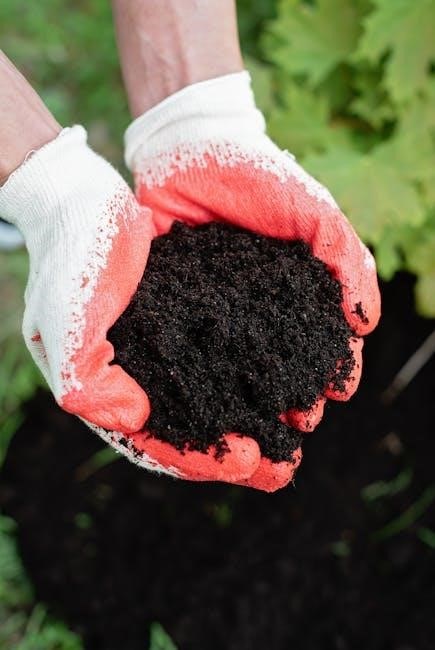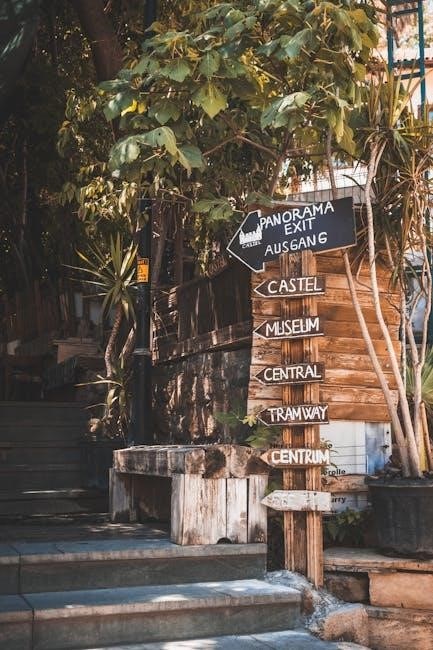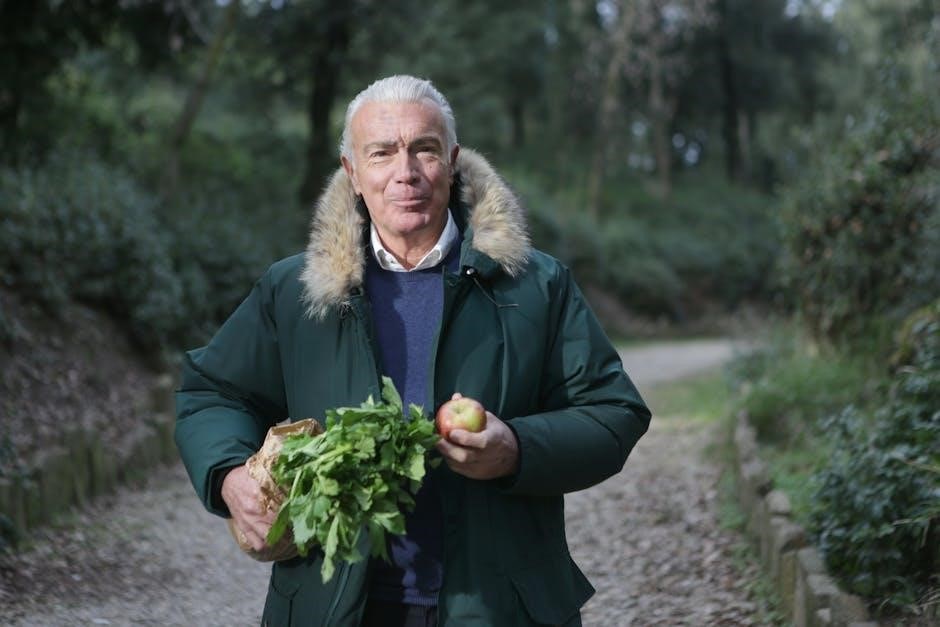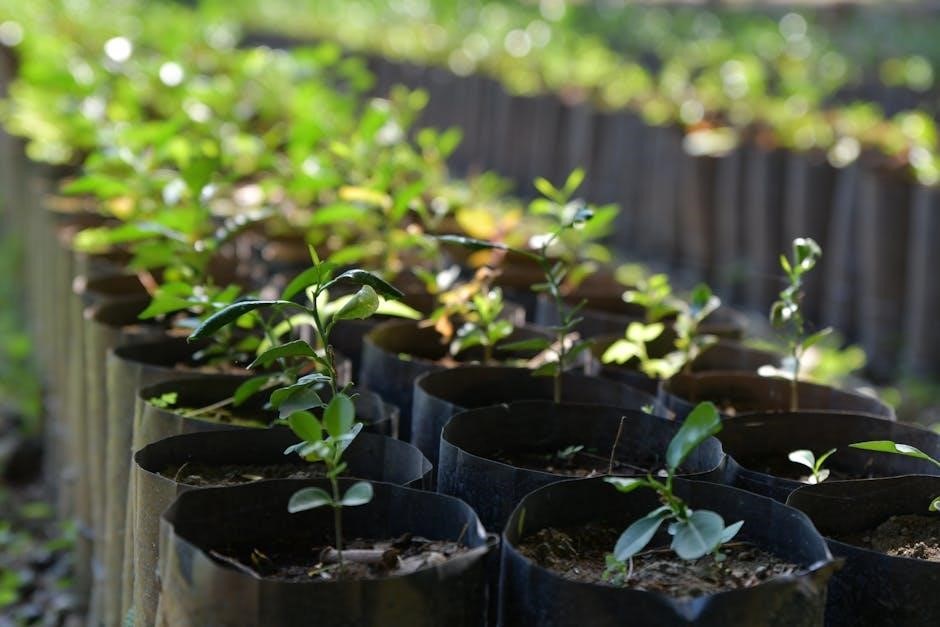
-
By:
- jayson
- No comment
10a planting guide
Understanding USDA Hardiness Zone 10a
USDA Hardiness Zone 10a has warm winters and hot‚ humid summers. The average annual extreme temperature ranges from 30°F to 35°F. This zone offers a long growing season‚ ideal for year-round gardening. Plants thrive in the mild winters and can tolerate the intense summer heat. Gardeners in Zone 10a can grow a wide variety of cool-season and warm-season crops‚ making it a versatile zone for diverse plantings.

Best Vegetables for Zone 10a
Zone 10a supports a variety of vegetables‚ including cool-season crops like broccoli‚ kale‚ and carrots‚ and warm-season crops such as beans‚ eggplant‚ and hot peppers. Year-round planting is possible.
Cool-Season Vegetables
Cool-season vegetables thrive in Zone 10a’s mild winters and early springs. These crops prefer temperatures between 40°F and 70°F‚ making them ideal for planting in late fall to early winter. Popular choices include broccoli‚ kale‚ spinach‚ radishes‚ beets‚ carrots‚ and Brussels sprouts. These vegetables can tolerate light frosts and grow rapidly during cooler months. They are typically planted in September or October for a winter harvest. Some gardeners also plant in late January or early February for a spring harvest. Cool-season vegetables are perfect for adding fresh‚ nutritious produce to meals during the cooler parts of the year in Zone 10a.
Warm-Season Vegetables
Warm-season vegetables are perfectly suited for Zone 10a’s long‚ hot summers. These crops thrive in temperatures above 65°F and can tolerate the intense heat typical of this zone. Popular warm-season vegetables include tomatoes‚ peppers‚ eggplants‚ cucumbers‚ zucchini‚ okra‚ and sweet potatoes. They are usually planted in late spring to early summer‚ after the last frost date‚ ensuring optimal growth during the warmest months. Some varieties‚ like beans and corn‚ can be planted multiple times throughout the growing season for continuous harvests. Warm-season vegetables often require consistent moisture and full sun to produce abundantly. They are a staple in Zone 10a gardens‚ providing fresh‚ flavorful produce throughout the summer and into early fall.
Best Fruits for Zone 10a
Zone 10a’s subtropical climate makes it ideal for growing a wide variety of delicious fruits. Tropical fruits like mangoes‚ papayas‚ and pineapples thrive in the warm temperatures and high humidity. Citrus trees‚ such as oranges‚ lemons‚ and limes‚ are also well-suited for this zone‚ producing abundant fruit year-round. Avocados‚ guavas‚ and passionfruits are popular choices due to their adaptability to the local conditions. Berries like strawberries and blueberries can be grown successfully‚ especially when planted in cooler months. Grapes and figs also perform well in Zone 10a‚ benefiting from the long growing season. With proper care and soil preparation‚ gardeners can enjoy a bountiful harvest of fresh‚ flavorful fruits throughout the year. This zone’s diverse growing potential makes it a paradise for fruit enthusiasts and home gardeners alike.

Monthly Planting Schedule
Zone 10a offers a year-round planting opportunity. Plant cool-season crops in winter and transition to warm-season varieties as temperatures rise. Continuous planting ensures a bountiful harvest throughout the year.
January
In Zone 10a‚ January is an excellent time to plant cool-season crops. Vegetables like broccoli‚ kale‚ spinach‚ and carrots thrive in the cooler winter temperatures. Root vegetables such as beets‚ radishes‚ and turnips also do well. For fruits‚ strawberries can be planted from seeds or as established plants. This month is ideal for transplanting seedlings like tomatoes and peppers that were started indoors. Ensure soil is well-prepared with organic matter for optimal growth. Avoid planting hot-weather crops like eggplant and okra‚ as they prefer warmer conditions. January’s mild weather allows for a diverse garden‚ setting the stage for a productive growing season. Proper spacing and consistent watering are key to success during this period.
March
March in Zone 10a is a transitional period‚ allowing gardeners to plant both cool-season and early warm-season crops. Vegetables like beans‚ cucumbers‚ and zucchini can be directly sown. Tomatoes‚ peppers‚ and eggplants can be started indoors for later transplanting; Herbs such as basil and dill thrive in March’s mild temperatures. Strawberries can be planted from seeds or as established plants for a spring harvest. Soil preparation is crucial; add compost to improve fertility and drainage. Consistent watering supports healthy growth. This month is ideal for succession planting to ensure a continuous harvest. Rotate crops to avoid depleting soil nutrients and reduce pest risks. March is also a good time to prune existing plants and mulch beds to retain moisture. With proper care‚ your garden will flourish as temperatures rise. March’s planting sets the stage for a productive spring and summer growing season.

Tips for a Successful Garden
For a thriving garden in Zone 10a‚ start with well-prepared soil rich in organic matter like compost or manure. Consistent watering is essential‚ but avoid overwatering‚ which can lead to root rot. Mulch around plants to retain moisture and suppress weeds. Rotate crops annually to replenish soil nutrients and prevent pest buildup. Use natural pest control methods‚ such as introducing beneficial insects or neem oil‚ to maintain a balanced ecosystem. Companion planting can enhance growth and deter pests‚ so pair crops like tomatoes with basil or marigolds. Succession planting ensures a continuous harvest by sowing new seeds every few weeks. Keep a garden journal to track planting dates‚ weather patterns‚ and pest activity. Seek advice from local gardening groups‚ as microclimates within Zone 10a may affect results. By following these tips‚ you can maximize productivity and enjoy a healthy‚ vibrant garden year-round.
Common Mistakes to Avoid
When gardening in Zone 10a‚ one common mistake is planting warm-season crops too early‚ as they may not thrive in cooler winter months. Overwatering is another issue‚ leading to root rot and nutrient leaching. Neglecting soil preparation can result in poor plant growth‚ so ensure soil is enriched with organic matter. Many gardeners overlook the importance of crop rotation‚ which prevents soil depletion and pest buildup. Another mistake is not accounting for microclimates within the zone‚ as local conditions can vary. Ignoring companion planting principles can lead to pest infestations and reduced yields. Additionally‚ failing to monitor for pests and diseases regularly can quickly escalate problems. By avoiding these common errors‚ gardeners can create a more resilient and productive garden tailored to Zone 10a’s unique conditions‚ ensuring a bountiful harvest throughout the year.
Companion Planting
Companion planting is a valuable technique for optimizing garden health in Zone 10a. Certain plants‚ when grown together‚ improve growth‚ deter pests‚ and enhance flavor. For example‚ basil pairs well with tomatoes to repel pests‚ while marigolds repel nematodes that harm vegetables. Nasturtiums are ideal for cabbage and kale‚ as they attract beneficial insects. Herbs like dill and mint can deter aphids and other pests‚ protecting nearby plants. Meanwhile‚ avoid planting members of the Brassica family (like broccoli) near strawberries‚ as they compete for nutrients. Incorporating flowers like calendula and sunflowers attracts pollinators‚ boosting fruit production. Radishes can be interplanted with cucumbers to repel cucumber beetles. By strategically placing complementary plants‚ gardeners can create a balanced ecosystem that reduces pests and diseases naturally. This method is especially effective in Zone 10a’s long growing season‚ promoting biodiversity and maximizing yields without chemicals.

Succession Planting
Succession planting is a key strategy for maximizing yields in Zone 10a’s long growing season. This method involves planting multiple crops in the same space throughout the year‚ ensuring continuous harvests. Start with cool-season crops like broccoli‚ spinach‚ and kale in early winter‚ then transition to warm-season crops like tomatoes‚ peppers‚ and eggplants as temperatures rise. After harvesting summer crops‚ replant with cool-season varieties again in late summer or early fall. Fast-growing plants like radishes‚ beans‚ and leafy greens can be successionally planted every 1-2 weeks. This approach prevents soil depletion by rotating plant families and reduces pests and diseases. In Zone 10a‚ gardeners can grow up to three crop cycles annually‚ making succession planting a highly effective way to enjoy fresh produce year-round. Proper planning and timing are essential to make the most of this technique in the region’s favorable climate.
Soil Preparation
Proper soil preparation is essential for a thriving garden in Zone 10a. Start by testing your soil pH‚ as most vegetables and fruits prefer a slightly acidic to neutral range (6.0–7.5). Add organic matter like compost‚ well-rotted manure‚ or aged mulch to improve soil structure and fertility. Sandy soils benefit from added humus to retain moisture‚ while clay soils need organic amendments to enhance drainage. Till the soil to a depth of 8–10 inches to loosen it and promote root growth. Incorporate balanced fertilizers (e.g.‚ 10-10-10) based on soil test results. Mulch around plants to retain moisture‚ suppress weeds‚ and regulate soil temperature. Avoid over-tilling‚ as it can damage soil structure and reduce beneficial microbes. Rotate crops annually to maintain soil health and prevent nutrient depletion. Proper soil preparation ensures robust plant growth and maximizes yields in Zone 10a’s challenging climate.
Pest Management
Pest management is crucial for maintaining a healthy and productive garden in Zone 10a. Common pests include aphids‚ whiteflies‚ spider mites‚ and caterpillars. Use natural predators like ladybugs or lacewings to control infestations. Introduce beneficial insects to balance the ecosystem and reduce reliance on pesticides. Organic pesticides‚ such as neem oil and insecticidal soap‚ are effective against soft-bodied insects. Practice good hygiene by removing infested plants and disposing of debris. Use physical barriers‚ like fine mesh‚ to protect young plants from pests. Rotate crops annually to break pest life cycles and improve soil health. Encourage biodiversity by planting a variety of flowers and herbs to attract beneficial insects. Regularly monitor plants for early signs of infestation to prevent widespread damage. A combination of these strategies ensures a balanced and resilient garden ecosystem in Zone 10a.
Gardening in USDA Hardiness Zone 10a offers a unique opportunity for year-round growth‚ thanks to its mild winters and long growing season. By understanding the zone’s characteristics and selecting the right plants‚ gardeners can enjoy a diverse and bountiful harvest. Cool-season crops thrive in the cooler months‚ while warm-season crops take advantage of the hot summers. Proper planning‚ including succession planting and companion planting‚ ensures continuous productivity. The monthly planting schedule provides a clear roadmap for sowing seeds and transplanting. With the right strategies‚ Zone 10a gardeners can maximize their yields and enjoy fresh‚ homegrown produce throughout the year. Experiment with new varieties and adapt techniques to your specific conditions to make the most of this gardener’s paradise.